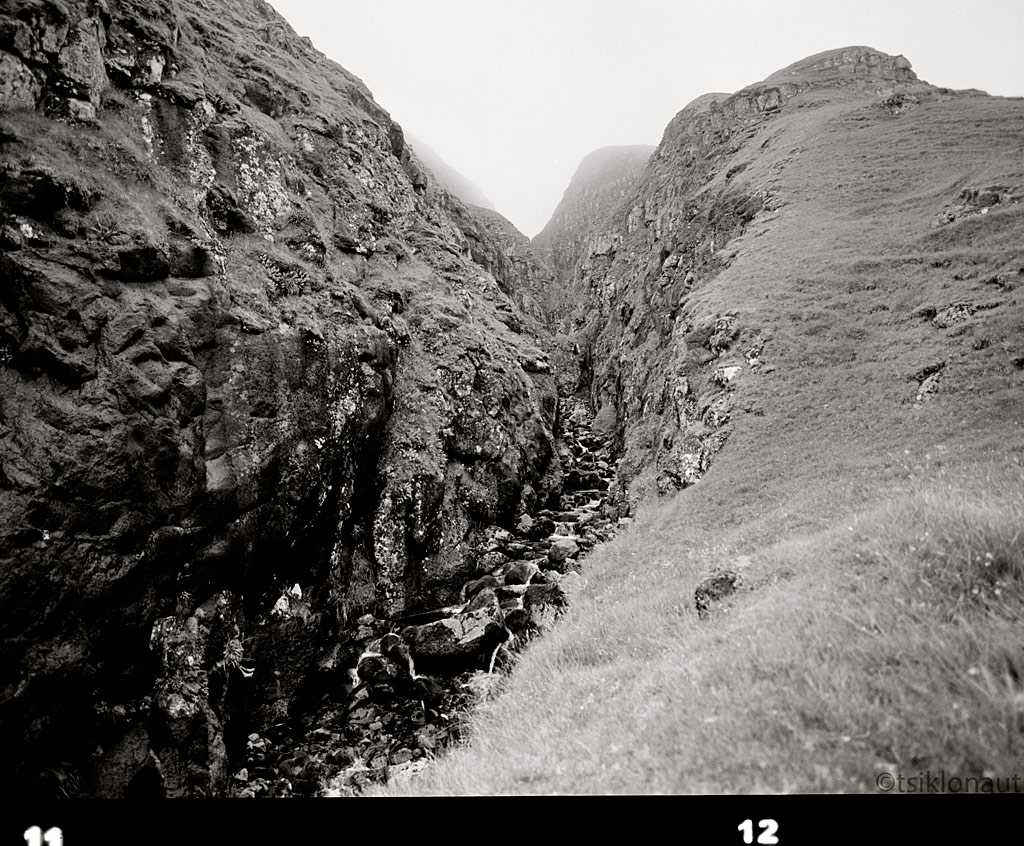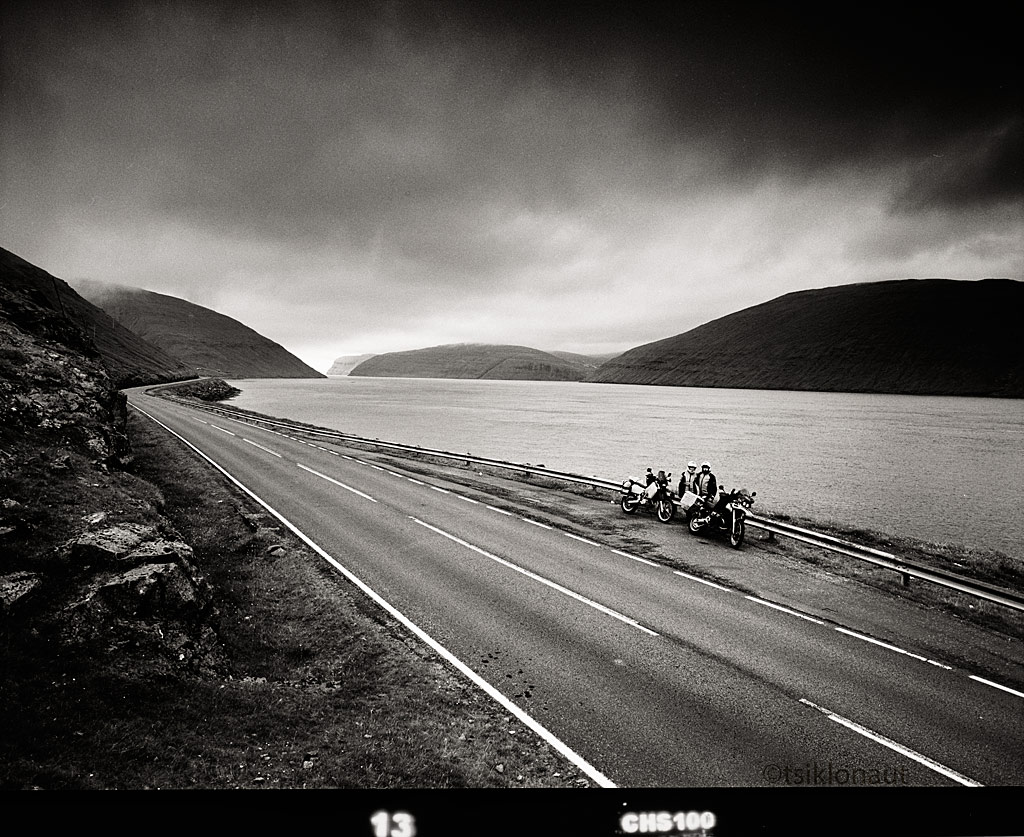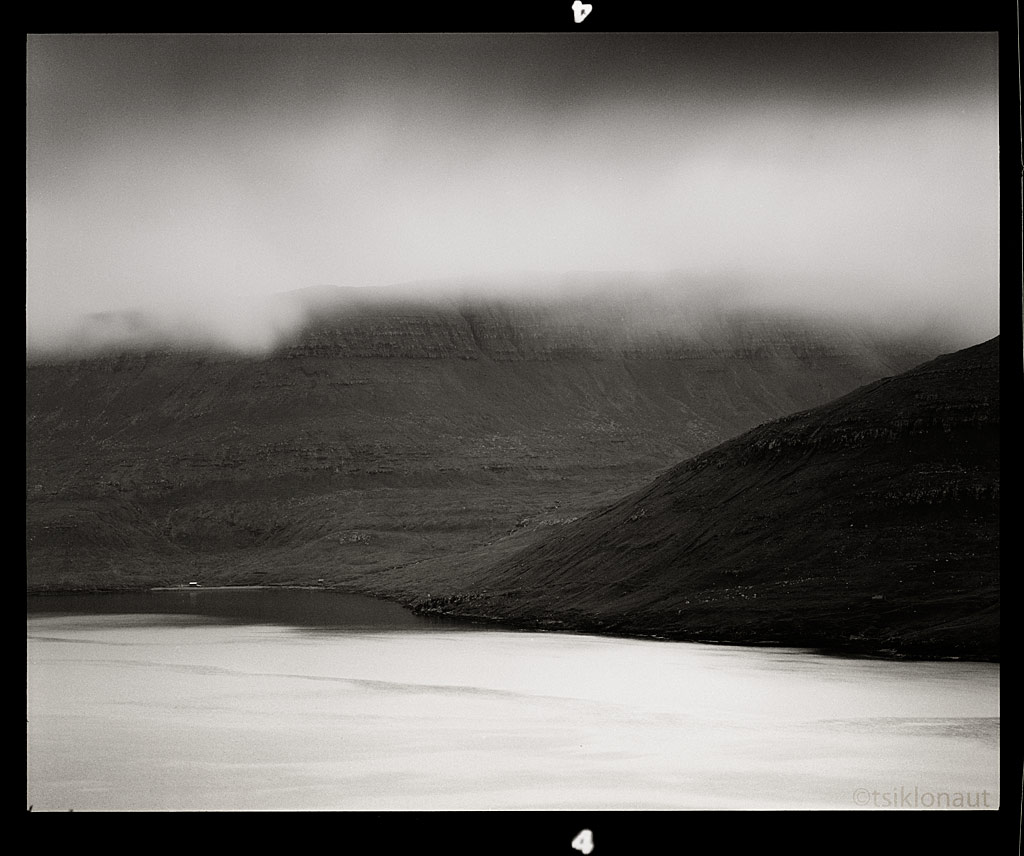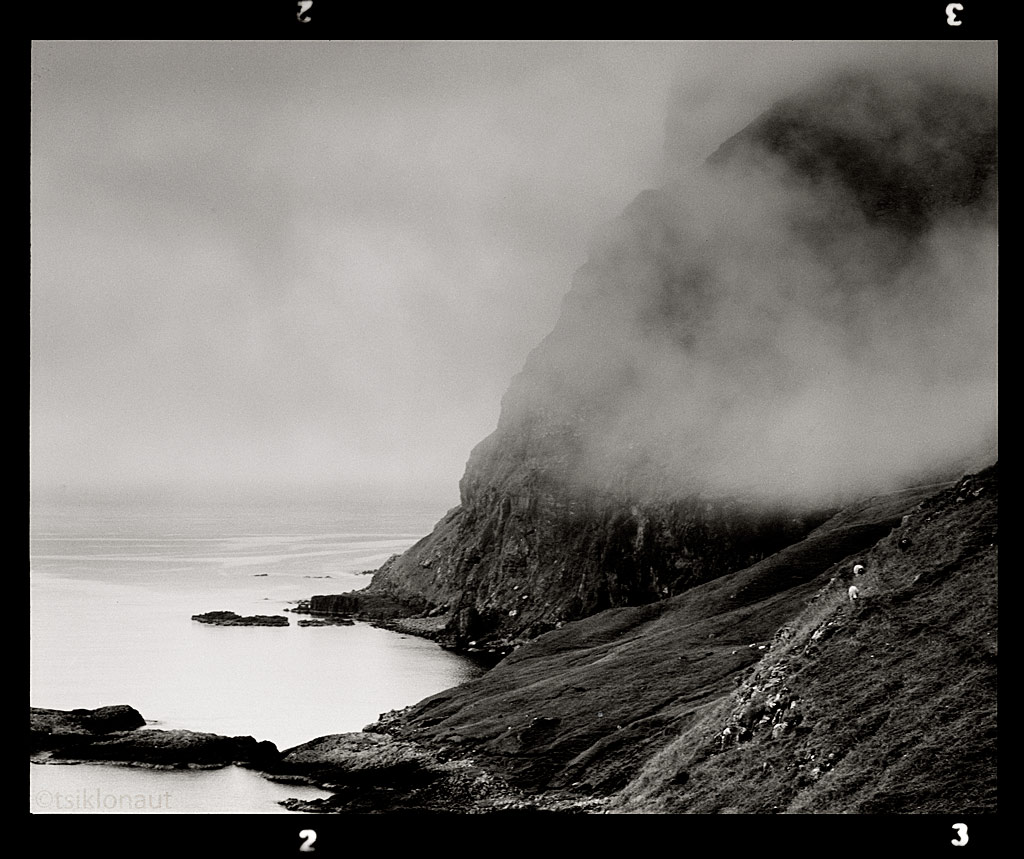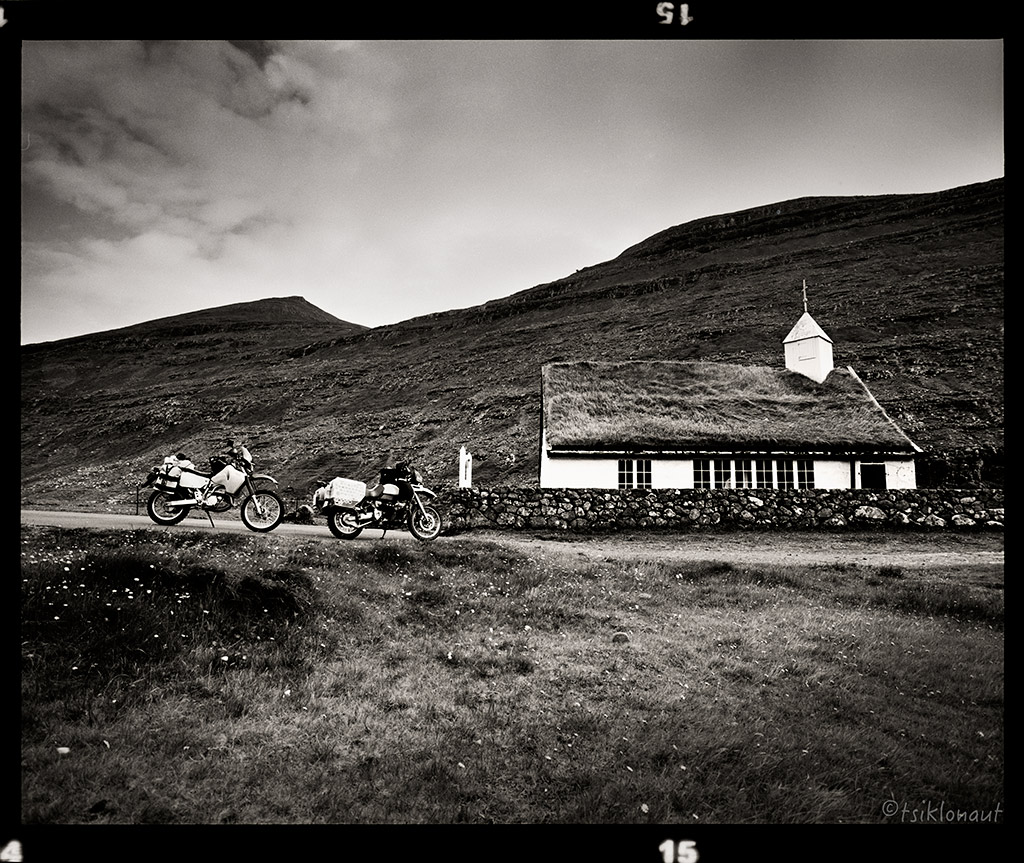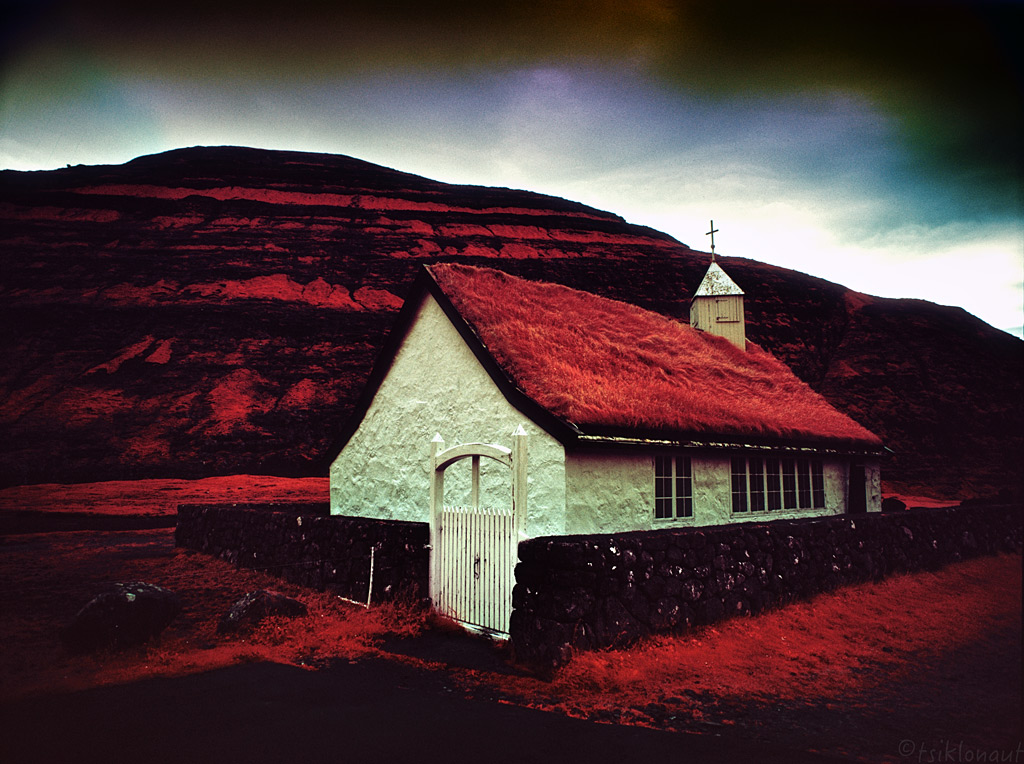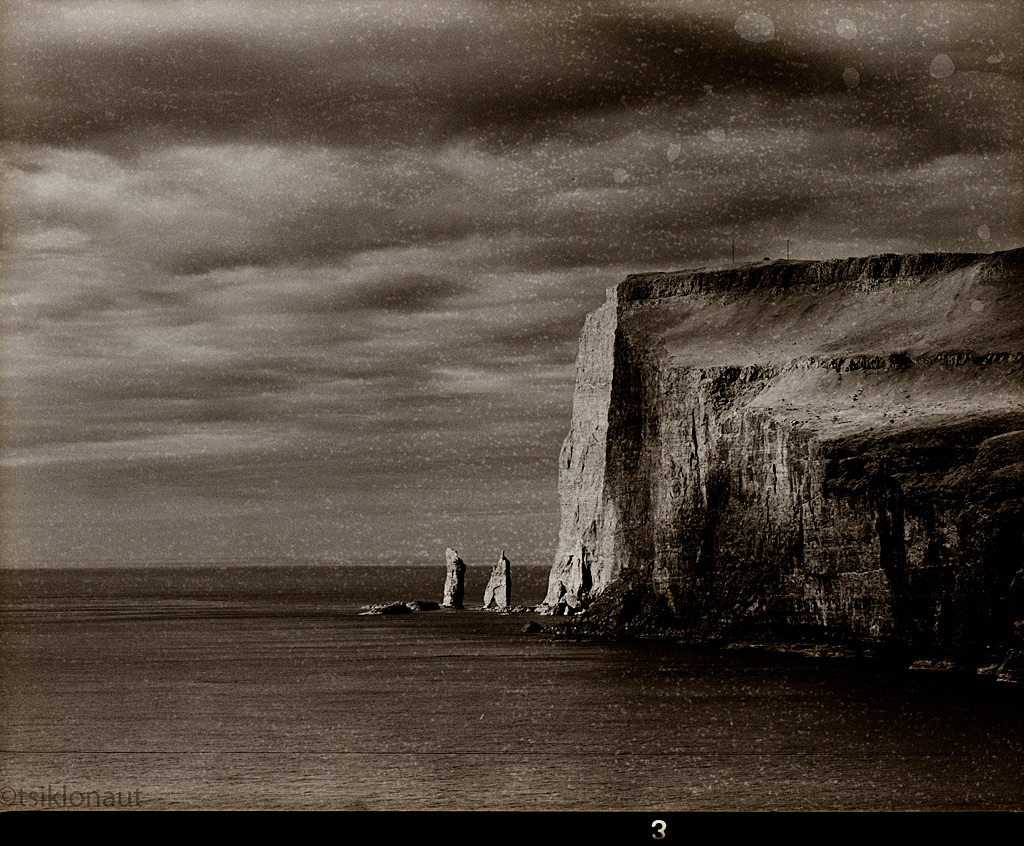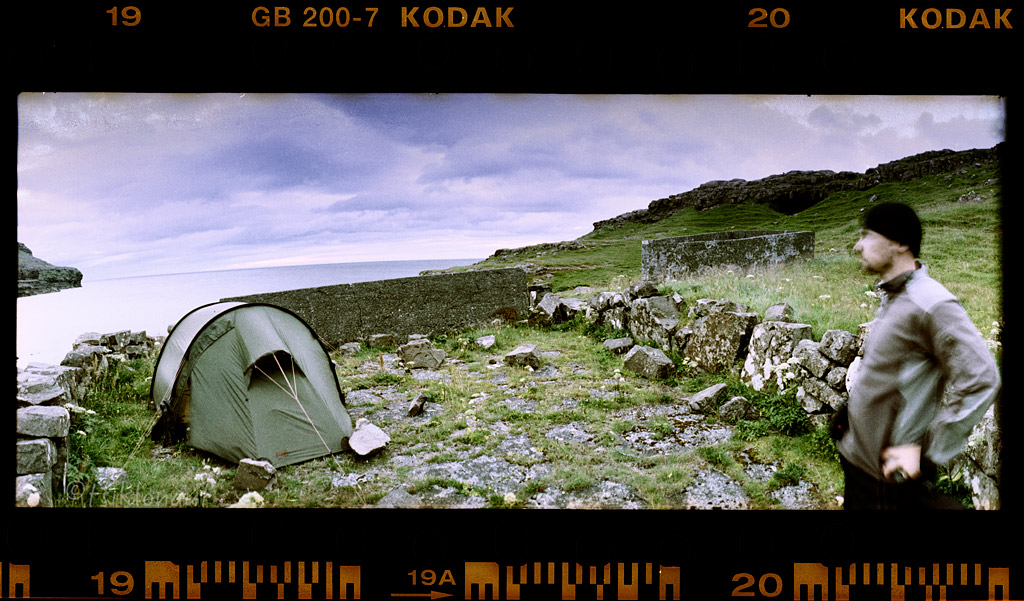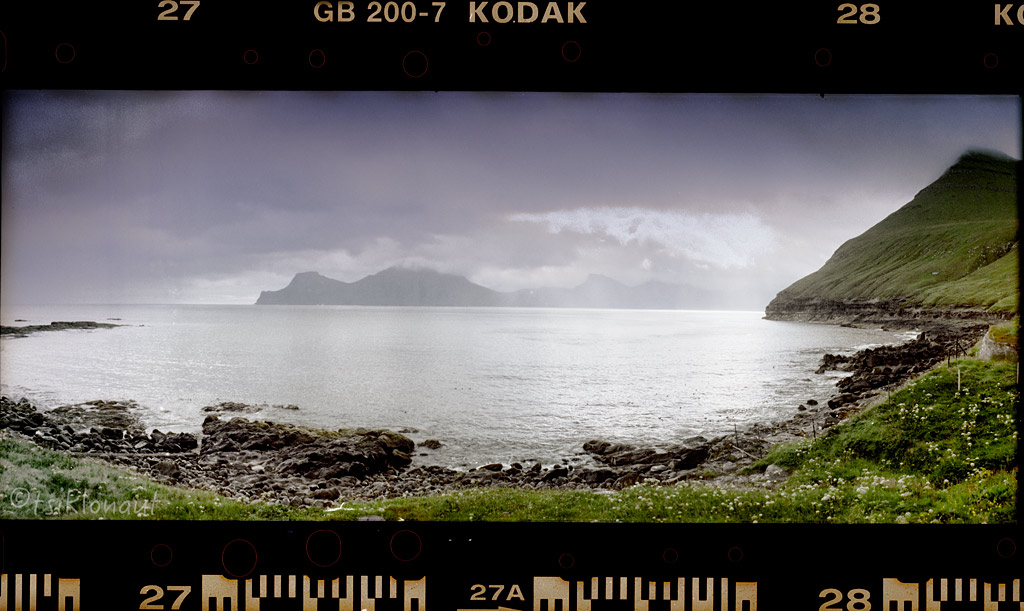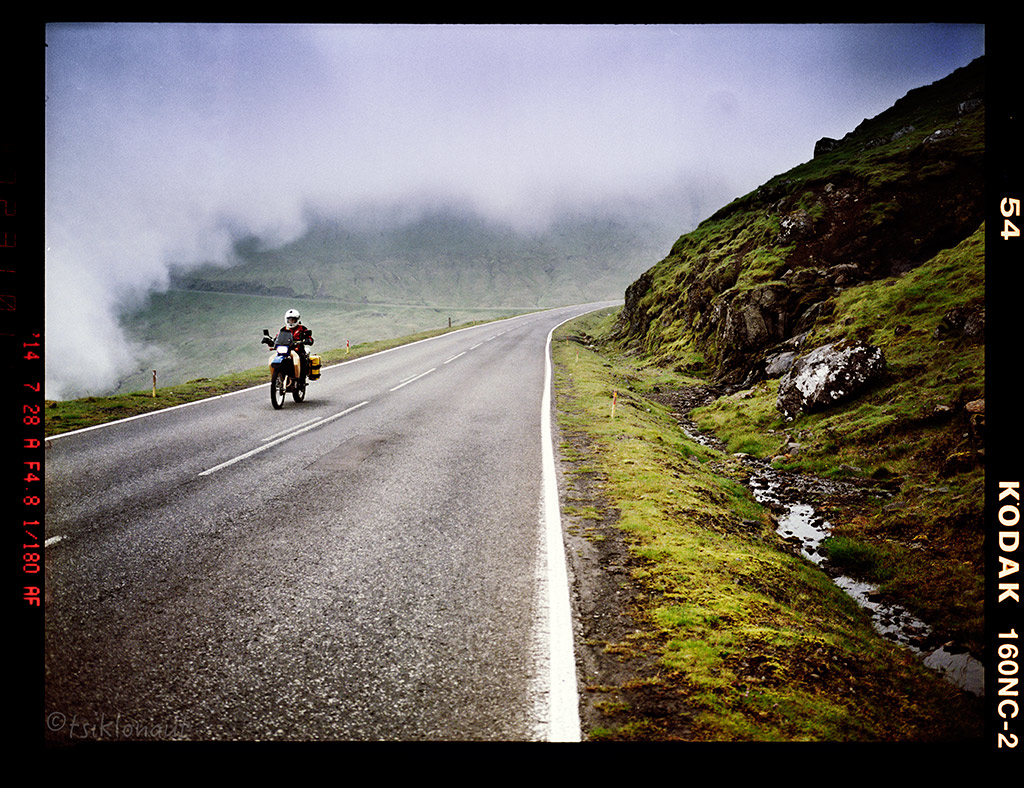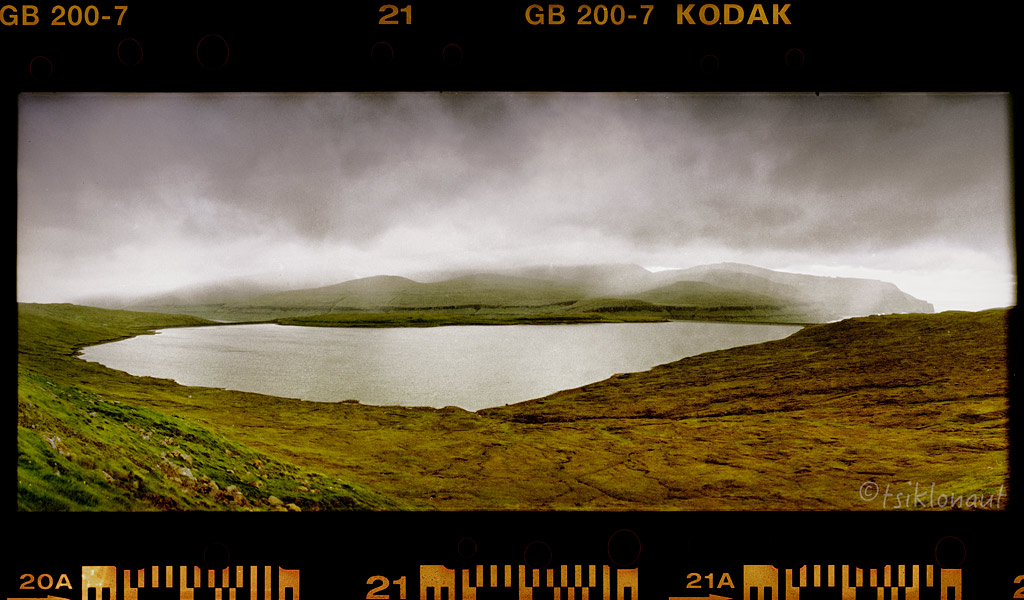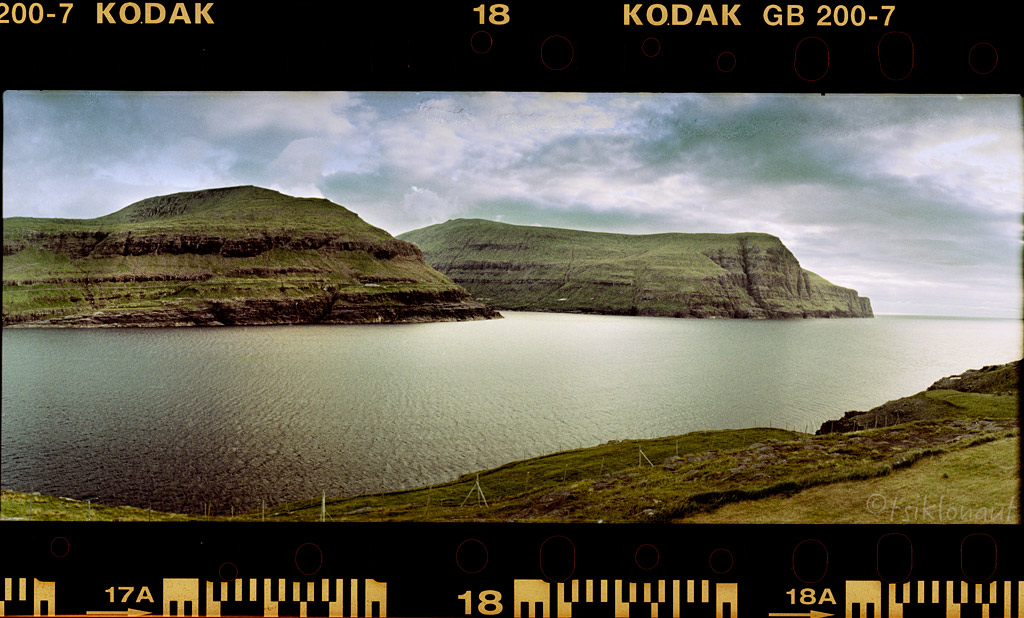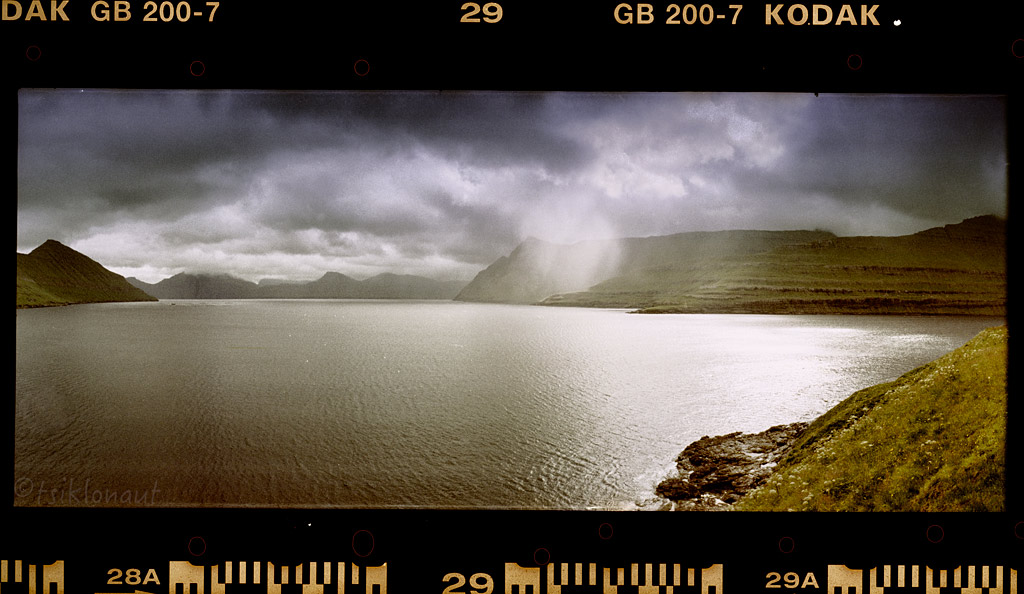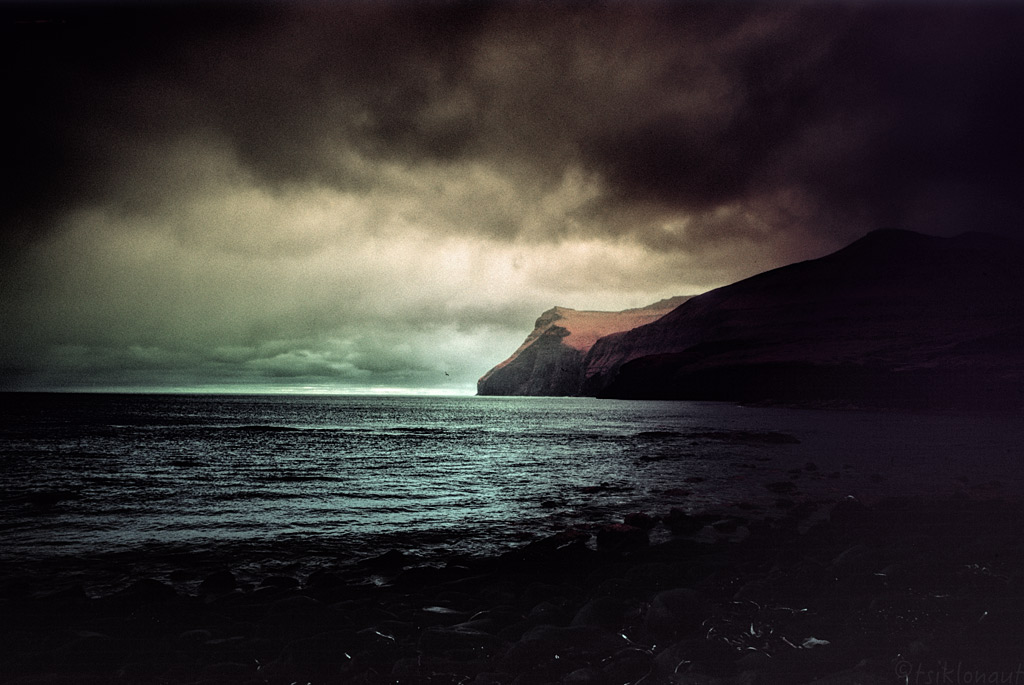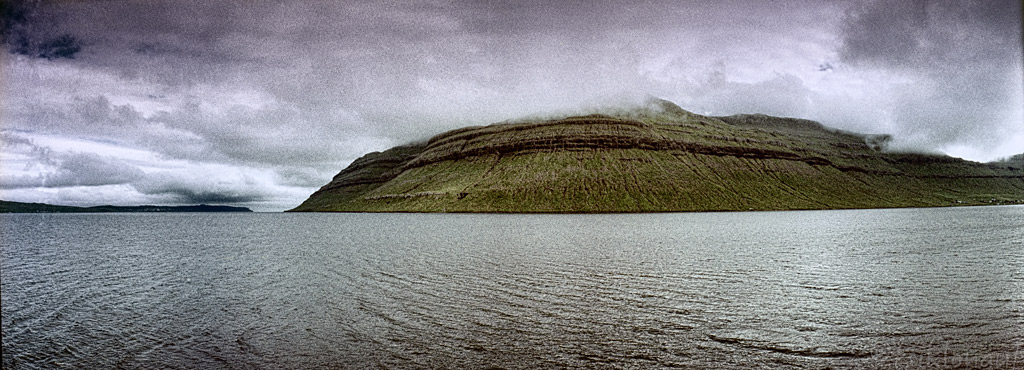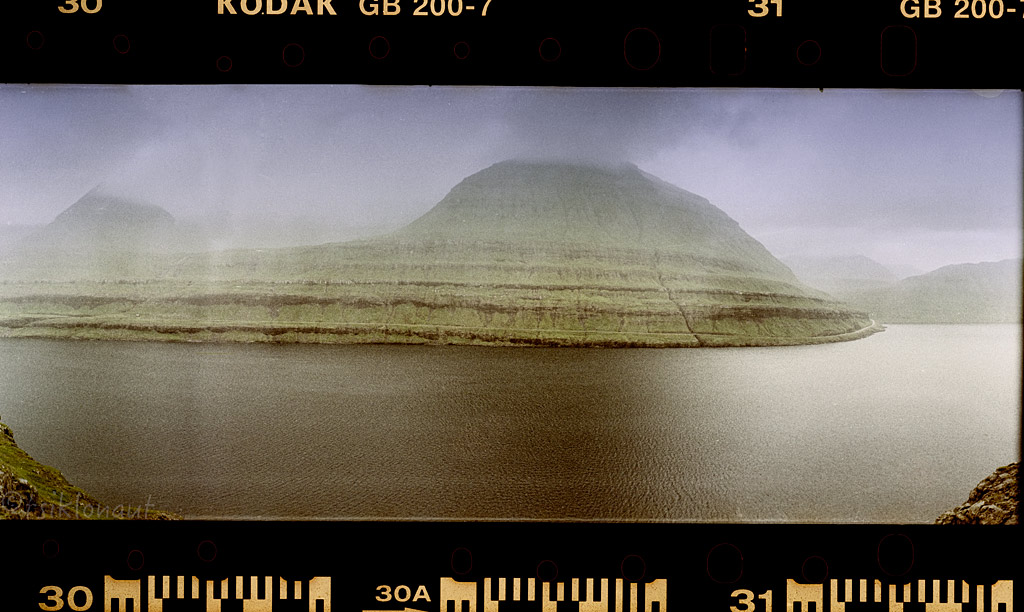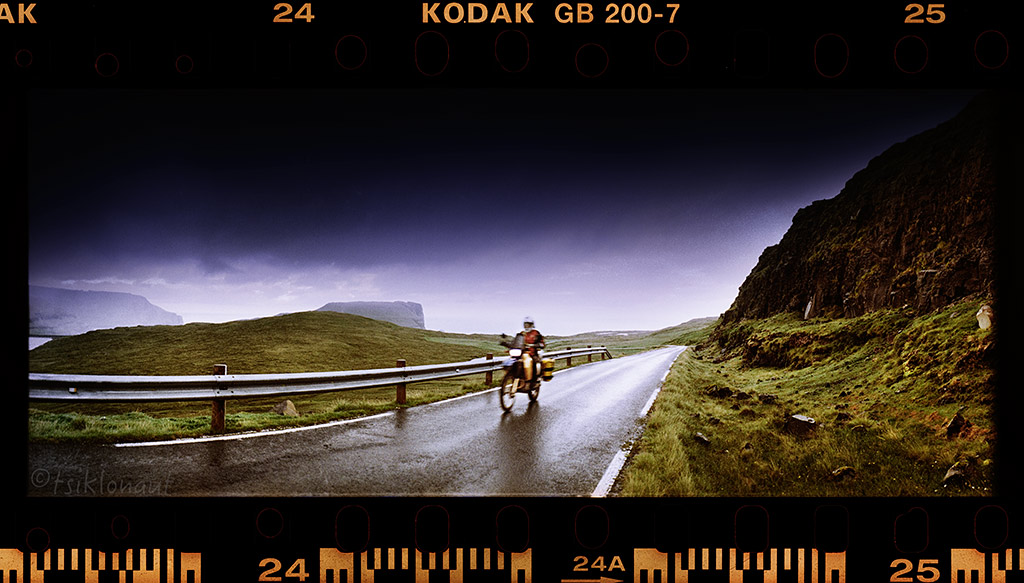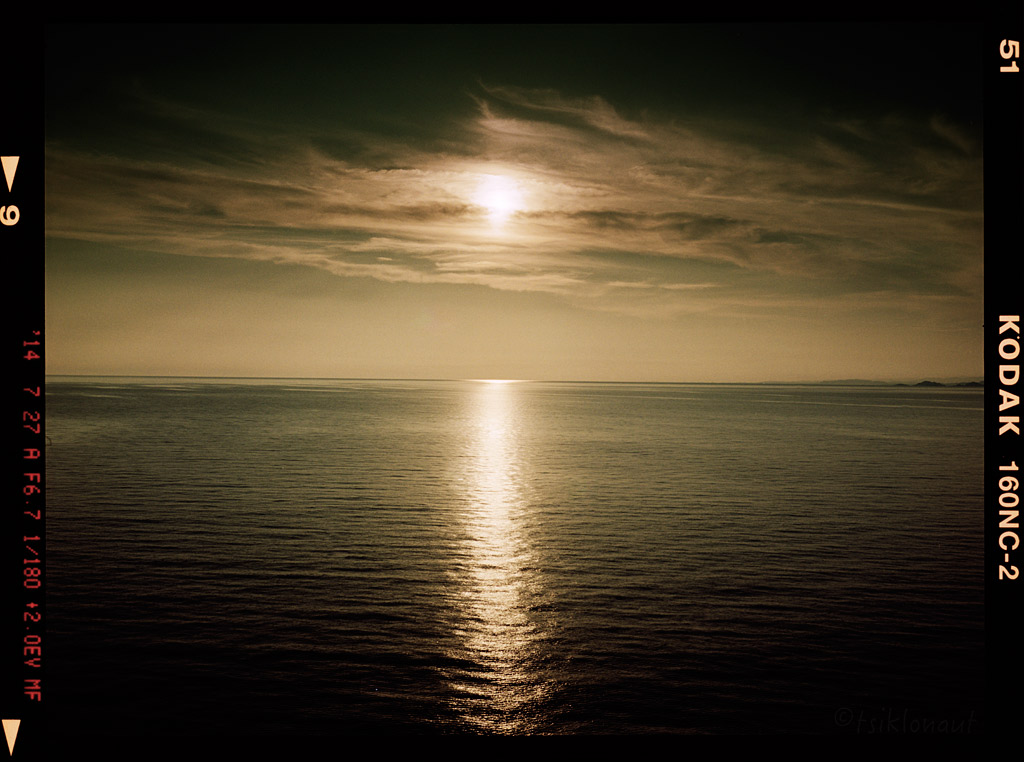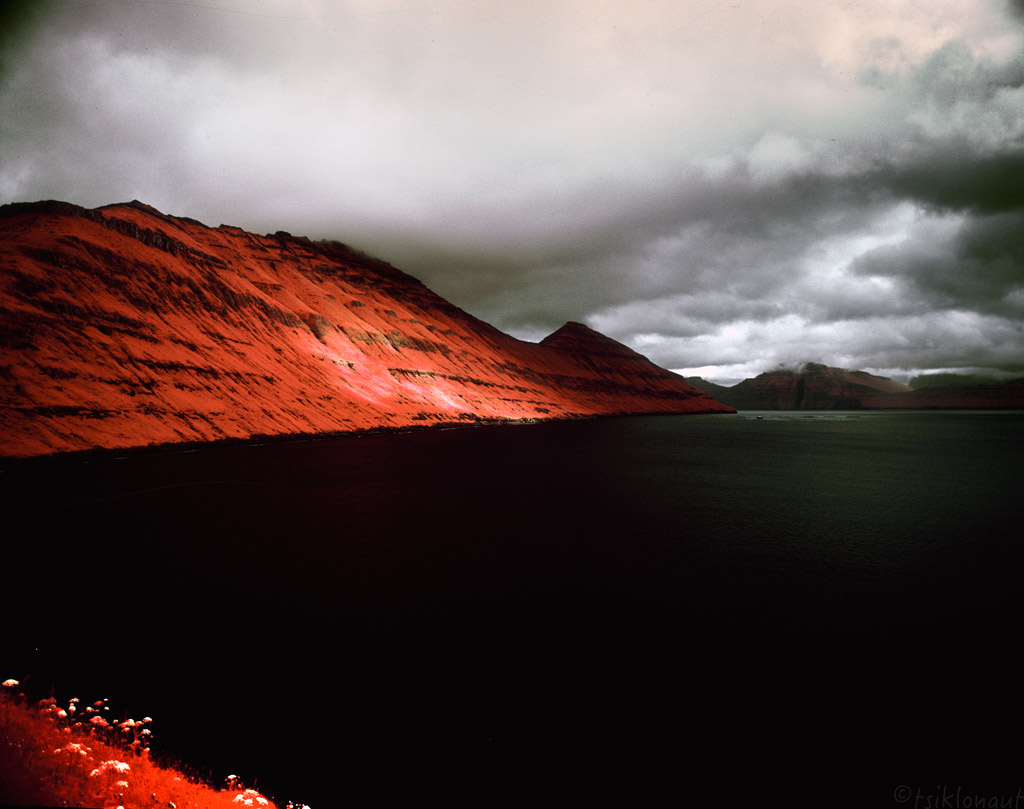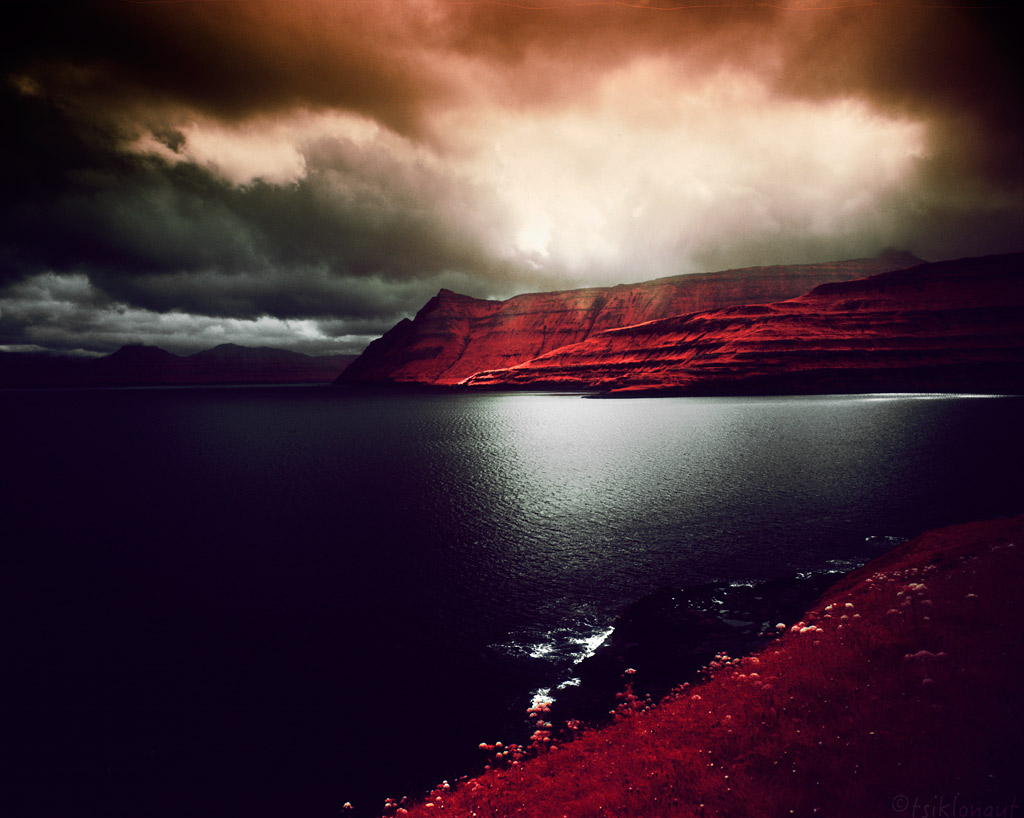tsiklonaut
Well-known
Our discovery led us to the northern part of Streymoy island. One thing that you cannot rely on when on the Faroes, is the weather. It mostly seems to rain, with thick clouds enveloping the hills. The next moment you may see rays of light coming though. And although the rapid changes of the weather mean the dilemma of whether to pull those waterproofs on or not (everybody knows that sweating in the raingear is almost as bad as being soaked without it), they do make it all up with the added drama. You could easily spend hours just watching the clouds rising and descending the green slopes…
